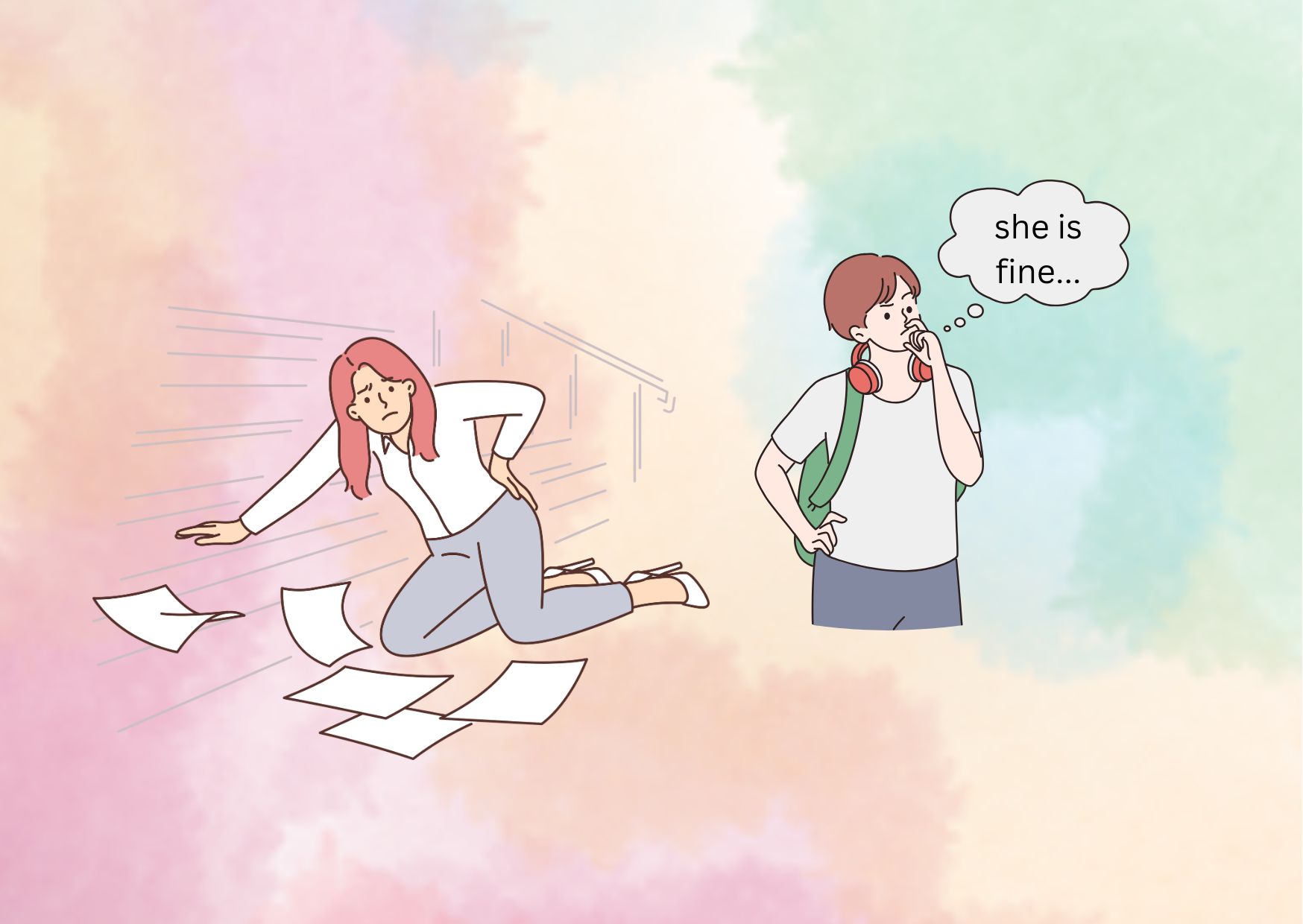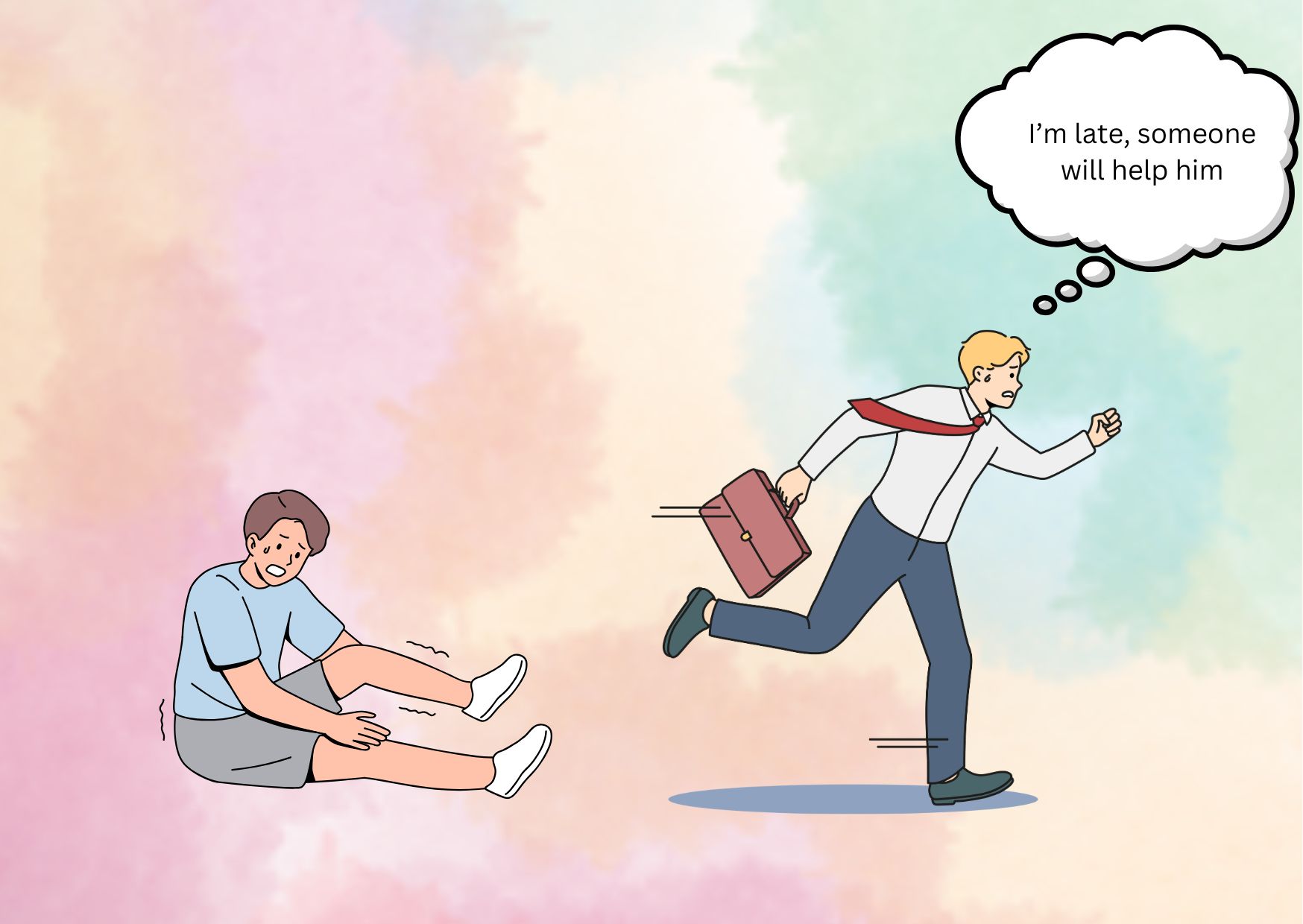Bystander Apathy: Psychological Roots and Impacts
Have you ever wondered why a crowd of people might witness an emergency without anyone stepping forward to help? This puzzling human behavior, known as bystander apathy, affects countless situations daily, from street accidents to workplace harassment.
The phenomenon gained widespread attention after the 1964 Kitty Genovese case, where dozens allegedly witnessed a murder without intervening. While details of that case were later disputed, the underlying psychology remains relevant today. Bystander apathy influences how people respond to emergencies, shapes online behavior, and impacts community safety. Understanding its roots and learning to overcome it could mean the difference between action and inaction when help is needed most.
The Psychology Behind Bystander Apathy
The psychological mechanisms behind bystander apathy reveal complex interactions between social pressure, personal responsibility, and human behavior. Research has identified three fundamental psychological processes that contribute to this phenomenon:
- Diffusion of Responsibility: The perceived duty to act becomes divided among present observers
- Evaluation Apprehension: Fear of being judged by others when acting publicly
- Pluralistic Ignorance: The mistaken belief that if others aren’t acting, the situation must not be serious
Understanding Social Inhibition
Social inhibition manifests when individuals suppress their natural helping instincts due to the presence of others. This psychological barrier stems from evaluation apprehension, where potential helpers fear negative judgment or embarrassment if their assistance is deemed unnecessary or incorrect. Research shows that bystanders often look to others for cues about appropriate behavior, creating a cycle of inaction when no one takes the first step.
Diffusion of Responsibility Explained
When multiple witnesses are present during an emergency, personal responsibility becomes psychologically distributed among all observers. Studies indicate that in groups of five or more, the likelihood of any individual helping decreases significantly. This diffusion occurs because each person assumes someone else will take action, effectively dividing the moral obligation among all present parties.
Role of Fear and Uncertainty
Fear and uncertainty play crucial roles in perpetuating bystander apathy through multiple mechanisms. In emergency situations, individuals often experience personal distress, which intensifies in the presence of others. This heightened stress can trigger fight-freeze-flight responses, frequently resulting in freezing or avoidance behaviors rather than helpful intervention.
The ambiguity of many emergency situations compounds this effect. When circumstances are unclear, observers typically experience pluralistic ignorance, where they misinterpret others’ inaction as evidence that intervention is unnecessary. This uncertainty creates a self-reinforcing cycle where each person’s hesitation validates others’ reluctance to act.
Research demonstrates that these psychological barriers become more pronounced in urban environments and among larger groups, where the perceived diffusion of responsibility is greatest. Understanding these mechanisms is crucial for developing effective strategies to overcome bystander apathy and promote active intervention in emergency situations.
Modern Manifestations of the Bystander Apathy Effect
The digital revolution has transformed how bystander apathy manifests in modern society, creating new challenges and dimensions to this psychological phenomenon. As human interactions increasingly shift online, the traditional dynamics of bystander apathy behavior have evolved to encompass virtual spaces and digital communications.
Digital Age Bystander Apathy Behavior
The emergence of digital platforms has fundamentally altered how people witness and respond to incidents requiring intervention. Research indicates that the online environment presents unique characteristics that amplify traditional bystander effect barriers. The absence of physical presence and non-verbal cues makes it more challenging for users to gage the seriousness of situations, while digital anonymity further diminishes the sense of personal responsibility.
Key statistics on digital bystander apathy behavior reveal concerning trends:
- 59-70% of college students witness cyberbullying on social media
- Only 10% of witnesses directly intervene in online incidents
- The majority choose to remain passive observers
Social Media and Virtual Witnesses
Social media platforms have created a new category of virtual witnesses, where the traditional dynamics of bystander apathy take on different forms. The diffusion of responsibility becomes more pronounced in online spaces, where the perceived number of potential interveners is significantly larger. Social media algorithms often amplify emotionally charged content, inadvertently encouraging users to observe rather than intervene.
The phenomenon of digital deindividuation emerges when users feel anonymous behind their screens, leading to decreased personal responsibility and reduced likelihood of intervention. This effect is particularly evident in cases where harmful content spreads rapidly while witnesses remain passive.
Cyberbullying and Online Harassment
Online harassment represents a critical arena where digital bystander apathy behavior impacts victim outcomes. Research has identified three distinct types of online bystanders: defenders who actively intervene, reinforcers who encourage negative behavior, and outsiders who remain passive. The presence of supportive bystanders can significantly influence the trajectory of cyberbullying incidents and their impact on victims.
The evaluation apprehension that characterizes traditional bystander situations manifests differently online, where fear of backlash or damage to digital reputation often prevents intervention. This reluctance is compounded by the permanence of online actions and the potential for rapid, widespread sharing of content.
Cultural and Societal Influences
Cultural variations in helping behavior reveal profound insights into how society shapes bystander apathy. Research across different countries and communities demonstrates that social norms and cultural contexts significantly influence intervention rates during emergencies.
Cross-Cultural Variations in Helping Behavior
Studies reveal striking differences in helping behavior across cultures, with intervention rates varying from 93% in Rio de Janeiro to 40% in Kuala Lumpur. These variations reflect deeper cultural values, particularly in societies with simpatia – an implicit cultural mandate for friendliness and helpfulness toward strangers. Research indicates that countries with simpatia traditions consistently demonstrate higher rates of stranger assistance compared to those without such cultural norms.
Notable findings in cross-cultural helping behavior:
- Collectivistic societies often show greater attention to strangers’ needs
- Economic productivity inversely relates to helping rates
- Social relationships significantly influence intervention likelihood
- Cultural traditions shape early development of helping behaviors
Societal Norms and Values Impact
Social norms function as customary rules governing behavior within groups and societies. These norms begin influencing prosocial behavior during middle childhood, when societal variations in fairness and helping behavior emerge. Cooperative social norms motivate uniquely human forms of costly prosocial behavior, explaining why societies differ substantially in:
- Patterns of generosity
- Expectations of assistance from others
- Willingness to intervene in emergencies
- Responses to perceived selfishness
Urban vs Rural Differences
Research demonstrates consistent differences between urban and rural communities in helping behavior. Meta-analysis of 65 studies reveals significantly higher helping rates in rural areas, with an effect size of .29. This rural-urban divide stems from several factors:
| Urban Environment | Rural Environment |
| Higher social overload | Stronger community ties |
| Greater anonymity | Personal accountability |
| Increased stimulation | Lower population density |
| Complex social dynamics | Direct social connections |

